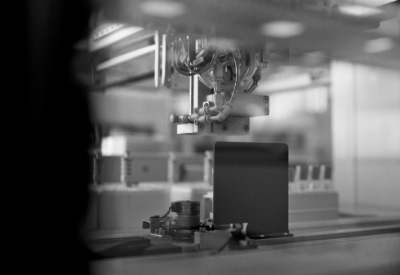“The Betavoltaic Battery Solution”
by Bret Elkind, Ph.D., Senior Scientist and Peter Cabauy, Ph.D., CEO of City Labs
September 2011
State-of-the-art conventional chemical battery technology can provide long-term power to devices for only a few years at best and primarily in optimal environments. Environmental factors including temperature, humidity, altitude, ocean depths, high amplitude vibration and extended (decadal) time periods continue to bestow adverse affects upon battery performance.
Advancements in betavoltaic technology have evolved to the point where some of the shortcomings associated with conventional power solutions can now be circumvented. These advances provide a source of continuous nanowatt-to-microwatt battery power that is resistant to a broad range of temperatures and other environmental conditions for extended periods of 20 or more years.
The energy source for this betavoltaic technology is Tritium, which is a beta particle (electron) emitting radioisotope of hydrogen. Tritium can be safely and effectively introduced into small sealed battery devices that harvest power and produce electrical current.
The beta particle emissions, arising from Tritium decay, induce the generation of electric current. Tritium is the most benign of radioisotopes and is routinely utilized in the public domain as an illumination source for gun sights, dive watches and exit signs, which are commonly found in schools, theaters and commercial aircraft.
Applications

An equally promising area resides in bioengineering and medical device implants. This is a primary point for insertion of betavoltaic power sources. Numerous possibilities exist for introducing small, scalable, long-lasting, low-power devices into such applications as cardiac pacemakers and defibrillators, cerebral neurostimulators, chemical delivery infusion pumps, in vivo drug delivery systems, cochlear implants, intraocular implants, brain / computer interface devices, and in vivo electronic medical tags/IDs. In all of these examples, discrete long-lasting (20+ year) power sources could be introduced that would power these devices while minimizing trauma to patients and easing the strain on the healthcare system.
In parallel with betavoltaic developments, advancing medical technology has opened up a portal for rapid developments in prosthetic, implant and sensor devices, thereby increasing both public demand and the market potential for these devices. Furthermore, the inherent characteristics of betavoltaics facilitate the miniaturization of these batteries to microscale medical applications. Integrated circuit chips measuring 1 mm x 1 mm already feature pressure sensors that can be implanted transdermally to measure the regrowth of a tumor. However, current small-scale chemical batteries can only provide power for a few months at best, which is not conducive to long-term implantable solutions where uninterrupted continuous power would be required for years or even decades. The high energy density found in Tritium betavoltaic batteries enables a diverse range of microscale medical implants that were previously not possible or simply unexplored until now.
Tested and Licensed to Sell
While the betavoltaic power source concept has been known for some time, the earlier incarnations encountered issues with the emerging lithium ion battery boom and regulatory restrictions associated with more aggressive radioisotopes. Recently, one betavoltaic manufacturer utilized advances in semiconductor design and the more benign Tritium isotope to manufacture safe, tested, functional and fully licensed betavoltaic batteries for distribution anywhere within the continental United States. This generally licensed technology satisfies nuclear regulatory guidelines and can be provided to an end user without the need for burdensome paperwork, radiological training, or a prior radiation license.









